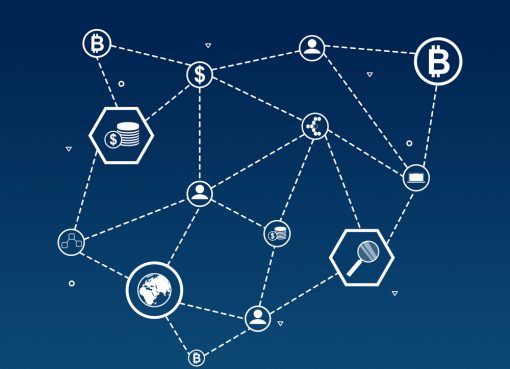The DeFi movement promises to provide a lot of benefits, including the elimination of regulators and intermediaries and making financial markets more accessible to retail investors.
2020 was indeed an exceptional year for cryptocurrencies as so many of them outperformed most traditional assets, but 2021 seems more promising. From all indications, decentralized finance (DeFi) has proven to be one of the major drivers of cryptocurrency’s comeback for over two years now.
In fact, its rate of adoption is mind-blowing. Between Dec. 10, 2020, and the time of writing, the total value locked (TVL) up in DeFi contracts has skyrocketed from $13.5 billion to $38.5 billion. Moreover, since the beginning of January till March, it has risen by approximately $23.6 billion. Unarguably, this is a clear sign that the industry is on a rampage.
Considering the above statistic, the opportunities lurking around Defi are extremely impactful, and that’s why it has grown so much. Still, its growing influence on the crypto market can’t be neglected.
As a matter of fact, every tradable token in existence that is utilized for Defi smart contracts was positively affected – their value rose significantly – some twice, thrice, and even fourfold within a year.
For example, YFIUP’s market capitalization has grown more than double since August 2020, from under $300 million to over $750 million today. XRPUP tokens soared more than ninefold in three days, from a low of $10.75 to a high of $96.6.
…..but why is decentralized finance one of the hottest plug in the blockchain industry?
Clearly, people love liberty, the free will to make money and run any operational task seamlessly without being regulated. And that’s what DeFi protocols are promising – to eliminate unnecessary intermediaries.
This amazing feature has facilitated many industries to join the DeFi bandwagon. In 2015, after MakerDAO, a platform that allows users to use cryptocurrencies as collateral for loans, was created, several enthusiasts and industries started digging deeper to discover how they can harness the benefits lurking around DeFi. This has positively led to its increasing craze.
And considering the fact that it functions as an open financial network that is trustless, has no central authority, run by smart contracts to eliminate foul play, and is decentralized, it has attracted many willing investors. Just within the Q1 of 2021, the value of tokens invested in DeFi protocols approached $40 billion.
DeFi Applications and Their Impact across Different Industries
For industries to achieve their lofty ambitions, DeFi developers make use of some fundamental properties of blockchain technology. Here are three out of many industries DeFi has impacted.
DeFi in the Health Industry
Patients and hospitals often find it difficult to keep track of medical records, from seeing different medical specialists to setting up payment plans for complex patients who need to consult with multiple doctors.
Medical record-keeping may be affected by many factors, including human errors and hacks. However, blockchain deployment can provide a more efficient system that would transform the state of the healthcare sector. For example, one of the blockchain projects working towards this revolution is the MedilaVeda – it’s a project striving towards achieving decentralization of finance in the medical and health sector. It also aims to offer products such as distributed Electronic Health Records (EHR), decentralized data management and data accessibility in the healthcare system.
DeFi in the Finance Industry
Traditionally, the financial industry has been affected by so many factors that have in one way or the other affected it’s users (customer). Well, thanks to the Ethereum blockchain – it has opened the door to so many DeFi benefits that can revolutionize the finance industry. Now, for instance, the DeFi lending industry is seeing lots of huge growth due to the amazing features lurking around the Ethereum blockchain which are – it promotes transparency, it’s an open-source network, secure protocols to source and secure funds; it facilitates financial transaction processes happen very fast and at a cheaper rate, it eliminates any form of unnecessary regulators and so many more. Interestingly, many companies are jumping on the bandwagon to also lick from this pot of honey.
For example, Compound. It’s a platform where lenders can supply crypto assets to a number of lending pools that are available for other people to borrow from. Meanwhile the interest the lender gains is dependent on their contribution to the pools. Yes, decentralized finance apps bring the untapped advantages of blockchain to the financial sector, while also trying to create super convenient interfaces to ensure a smooth user experience. Moreso, employing smart contracts such as dapps provide extra protection against traditional pests.
Defi in the Entertainment Industry
For many years now, independent film/content creators have been hidden in the shadows of Hollywood and other major movie industry monopolies. In fact, these talented curators struggle to pitch their amazing ideas directly to varieties of a worldwide audience of investors to make their creative dreams come true. Likewise, a new musician gets discovered and signs their first contract – only to discover nine of ten dollars (i.e., 90%) earned go to the industry. The standard, fair reward for their labor of love?
Enter Blockchain Music Entertainment (BME) – a worldwide collective group of artists and developers that are decentralizing the music and entertainment industries. BME gave birth to MP3 and MP4. These DeFi coins were created to end the industry monopolistic process of having to reach out to investors, labels, and centralized greed-machines. In doing so, MP3 and MP4 give content providers the opportunity to access a global network of investors to support their creative endeavors. In fact, MP4 is like a social media platform where influencers, filmmakers and content creators can tokenize themselves, their media, and their vision to interact with web3. Much in the same way, MP3 allows fans to bond to their favorite tokenized musician’s bonding curve.
BME takes artistic freedom to heart, stating they are “For Artists, by Artists.” Each DeFi Dapp is in production and expected to be live early in Q2. Both MP3 and MP4 also have the additional DeFi farming complement of their limited governance token called BMEG. Adding more to the madness, BME recently joined the NFT game and is planning to mint more exclusive NFT’s for artists as they come onboard.
In conclusion, the DeFi movement promises to provide a lot of benefits to users, customers and investors, including eliminating regulators and intermediaries, making financial markets more accessible to retail investors.
Having obtained a diploma in Intercultural Communication, Julia continued her studies taking a Master’s degree in Economics and Management. Becoming captured by innovative technologies, Julia turned passionate about exploring emerging techs believing in their ability to transform all spheres of our life.




